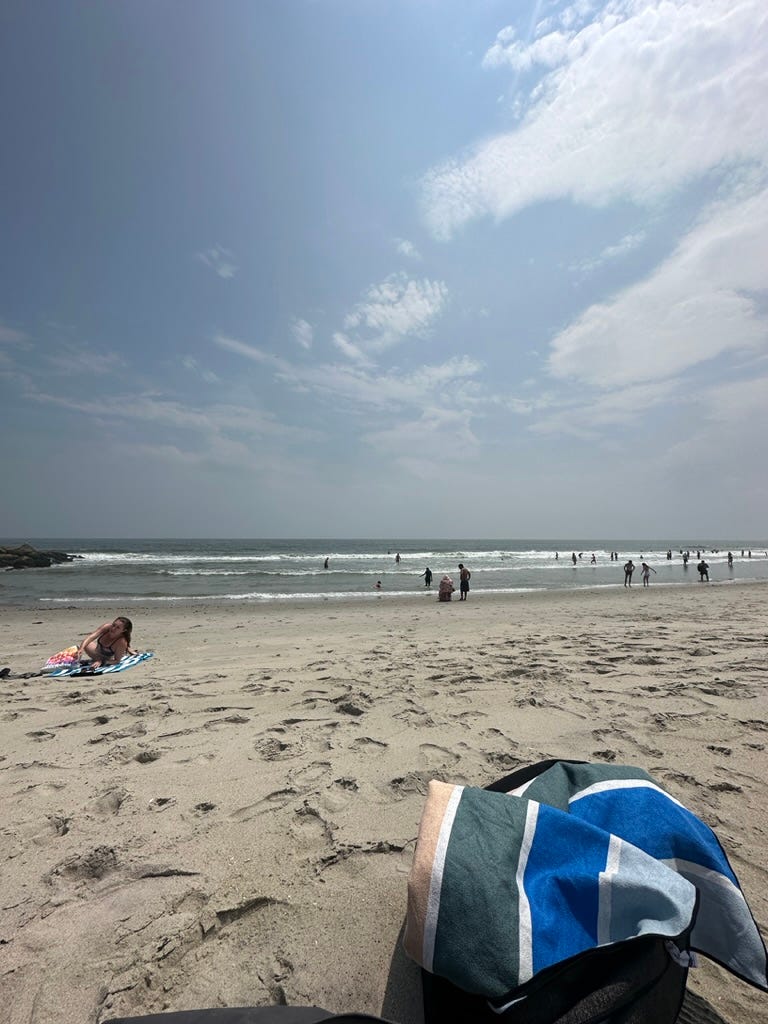Summers
This is Western Coffee—notes on building the creative body. Last time: Faster. The whole series is here. Please share this email; you can sign up free below.
Sometimes as a kid I would play in summertime on the grounds of the elementary school, whose building sat in astonishing dormancy, its halls shadowed and its classrooms half-hiding in the blinds. The place gave a sense of amnesia—the prior school year’s reality erased in the immaculate ring of the final bell, which rendered each grade upward into the distinct identity of the next, and put Mrs. So-and-So in retirement, and gave one of the kindergarten teachers another new last name. It was after I’d moved on to junior high that Ms. Dreier, my teacher in fifth grade, died, replaced by a plaque under a tree in the yard. But these things were always happening: You couldn’t count on the world you’d left in June to be the one you came back to in August.
That’s the vibe in New York City this week. People who used to go away for a long weekend over the Fourth of July are now gone for a week and a half, Zooming to work from Fire Island or the Hamptons. These are a few percent of the city’s population, yet their impact is disparate. It’s too easy to get a squat rack or a preacher curl rig now; you don’t even have to try. (The triathletes, who never actually vacation, still squabble over the pool, feisty like a Long Island shark.) As a symbol, nothing has made quite the impression that the Williamsburg Bridge did when I tried to cross back into Brooklyn a little after 7 p.m. on the Fourth: The deck for pedestrians and bikes was closed, I guess to avoid unmanageable crowds. You can’t just block off a bridge in New York anytime. It’s a summer thing.
This kind of hollowing out is ritual and peaceful, so I find myself being drawn to work. In research for my novel, I’ve been digging into a new book by the Mormonism historian Dan Vogel, about a period of Joseph Smith’s life that has stayed a little illegible to me, though I think it’s the heart of it. This period stretches from when he left New York State to resettle his fledgling church in what is now a suburb of Cleveland, up until when his highly speculative and illegal quasi-bank (which, denied a bank charter, he called the Kirtland Safety Society Anti-Banking Company) collapsed in late 1837, and he fled to Missouri. Adopting the view of his biographer Fawn Brodie, I think that in the middle of all that was the high point of his religious life—when he led the dedication of the Kirtland Temple, a two-week affair in which the Lord and a series of Old Testament prophets appeared within an Oz-like curtain to Joseph and his adored lieutenant Oliver Cowdery; angels ministered to the crowd, which had not embraced the later Mormon temperance; and, Joseph wrote, people in the neighborhood came running at the sight of “a pillar of fire resting upon the Temple.”
Brodie writes: “Never again in Mormon history was there to be a period of spiritual transport like this. With rare insight Joseph never made an effort to recapture the magic and mystery of these days.” This is the foundational moment of Mormonism, one to which all others allude.
Here’s hoping I can make that all the climax of a beach read for, say, summer ’25 or ’26.
Kindly send me your thoughts, questions, and provocations: dmichaelowen@gmail.com. And say hi on Instagram or Threads, or let’s Peloton together: @leggy_blond.



